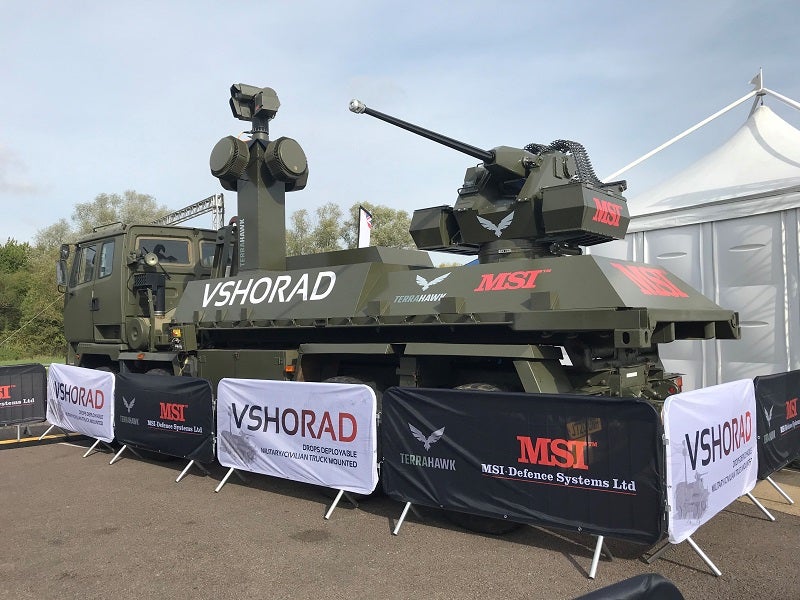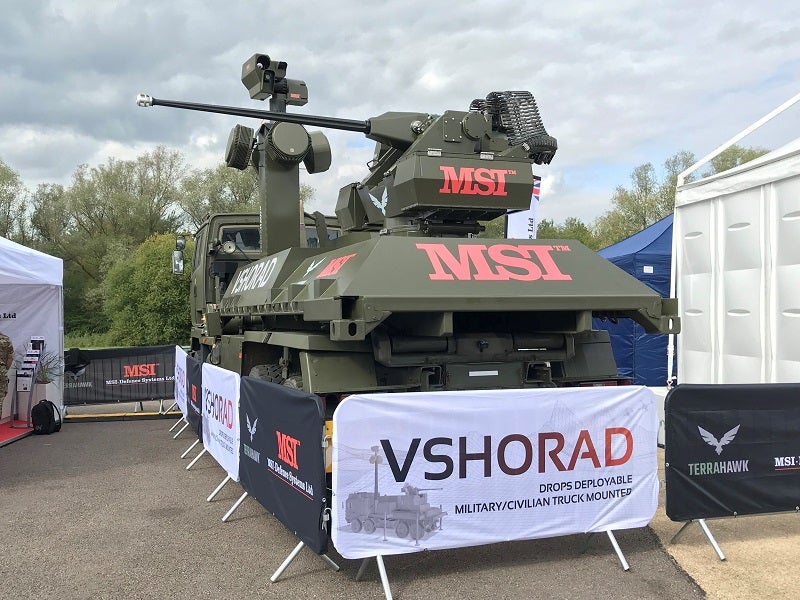
As the threat of state and non-state actors utilising uncrewed aerial systems (UAS) as a force multiplier in current and future conflicts increases, industry is turning its own attention to this burgeoning market in a bid to provide a solution.
Platforms from commercially available UAS up to military-specific aircraft are now commonplace among armed forces around the world, providing operators with a range of symmetric and asymmetric tactical options to leverage. Operating as single platforms or as a swarm, drones can overwhelm air defences or render their interception as uneconomical if using high-end, missile-based systems.
According to a recent GlobalData report, the interest in military UAS as a cost-effective platform for military operations, covering roles such as strike and intelligence, surveillance, and reconnaissance missions, has led to a surge in the global market. Forecasts show that the military UAS market will reach £12bn by 2032, growing at a steady compound annual growth rate of 3.12% over the next decade.
Industry therefore is keen to showcase its solutions to prospective operators, with a number of systems on display at the recent DVD 2022 at UATC Millbrook looking to catch the attention of international and UK delegations attending.
Mature technology and mobility key
One such concept was displayed by UK-based MSI-Defence Systems (MSI-DS), which had integrated its LW30M 30mm naval gun system onto a flat-bed vehicle, which also featured an integrated radar-based drone detection capability, dubbed by the company has the Lightweight 30M 30mm counter-uncrewed aerial system (c-UAS) system.
MSI’s 30mm weapon system is widely operated by forces in the naval domains, including the UK Royal Navy, with the Middle East a strong market for the company for land use in roles such as infrastructure protection. The twin ammunition bins enable different types of ammunition to be fired, depending on the target.

A senior official at MSI-DS told Army Technology that the concept saw the integration of radar, mobility, and fire systems that have a high Technology Readiness Level, effectively an indication of the maturity, brought together to provide a potential c-UAS solution to the global market.
“Why not use what already exists?” commented the official, adding that the c-UAS capability could be used remotely with a 1.5km command-and-control range, and integrate three systems into a wider area defence network.
The official added that the company was looking for a market to develop a full prototype, and envisaged interest from a number of regions.
According to a recent announcement, MSI-DS completed proof of capability trials for the Lightweight 30M 30mm c-UAS system, which is designed to be deployed in a mobile or fixed configuration. In a release the company stated that its electro optical component of the system handles final detection and interception, directing gunnery from the LW30M mounted with 30mm air burst munitions to defeat multiple targets.
The system can integrate with wide area surveillance networks such as radar, optical, and electronics intelligence-based systems, to provide what the company described as a “360-degree layered defence capability”.





